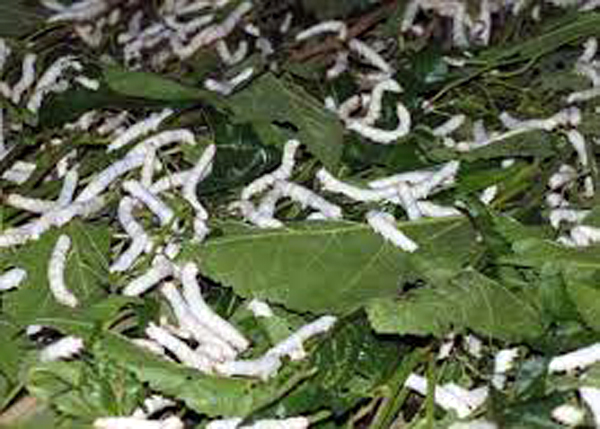Once a revered Silk industry of Jammu and Kashmir is reeling under distress for quite some years now. In 1846 during Maharaja Gulab Singh’s rule silk was exported from Jammu and Kashmir to the rest of India and other countries, it was a brand itself in entire Europe. Visionary Maharaja Hari Singh established the Rajbaghsilk factory in 1937, producing 38 varieties of silk. However, 200 years down the line silk industry of Jammu and Kashmir is somehow in oblivion. In the early 1980s, cocoon production was one and a half million kilograms per year, reduced to sixty thousand kilograms only in 1989 and one of the world’s largest silk factory at Solina had to be shut. Terrorism played havoc on this industry and whatever was left, the 2014 Kashmir floods destroyed even that, Rajbagh and Bemina Silk factories suffered massive damage never to recover back for years. However in 2020 efforts were made to revive Silk Industry now known as Sericulture with twelve crores in aid from World Bank, Rajbagh Silk Factory with a new building and automatic machines revived this factory. A showroom and an interpretation centre have also been constructed at Government woollen factory at Bemina. Similarly, a new silk rearing and weaving unit at Bari Brahamana Jammu has also been established. But even these efforts are not sufficient as shortage of raw material due to open auctions, old methods, lack of quality cocoons, and shortage of mulberry are few factors which have hampered the efforts to revive Sericulture in Jammu and Kashmir. But recently 29 points program has been chalked out and sericulture is part of this program. In this ninety crores plus plan outlay for 10 lakh new mulberry plants, doubling the silkworm seed production, doubling cocoon production, and new chawki rearing centres are proposed. Sericulture is a good cash crop and with these interventions, lakhs of people directly associated with the silk trade will be benefitted. Efforts are on to introduce new varieties of silk and increase the production of the existing factories. Availability of quality raw products is a must for this major export industry to survive. Old methods of production have to be shunned, the siloed approach is no more acceptable, and trice decision-making is the need of the hour. Innovation is a must, there is no place for ephemeral way-outs. Unlike other crops, Sericulture requires a lot of teamwork, from mulberry nurseries to cocoons to the final product, every step is a valuable addition to the other.
The department has right now 173 mulberry nurseries spread over an area of 963 acres across the UT and efforts are on to almost double the present infra, provide guidance and technical expertise to the public along with modernisation of the existing plants and more showrooms for better sale points. A good showroom at Katra can boost sales drastically as one crore plus pilgrims are good enough brand ambassadors to create a niche for Jammu and Kashmir Silk but the only condition is quality products. With both the SKUAST Universities actively involved, a unique variety can change the future of the Jammu and Kashmir Sericulture industries. Subsequently, the department can go in for GI tags of a specific variety. Like the apple industry, Lulu group and other international market players can be roped in to generate foreign exchange. Even Jammu and Kashmir Industries Department has to play an important role, both with purchases and the establishment of industry. Uniqueness is the key to the whole exercise. There is no dearth of craftsmen or artisans in Jammu and Kashmir, a little guidance, technical expertise, financial help and a bit of impelling can give results beyond expectations. The plan is there, initial steps have been taken, and all stakeholders know their roles, it is just a question of time and we can have an excellent result even beyond our expectations.
Trending Now
E-Paper


